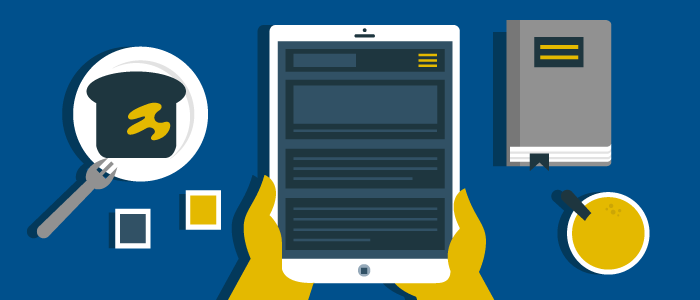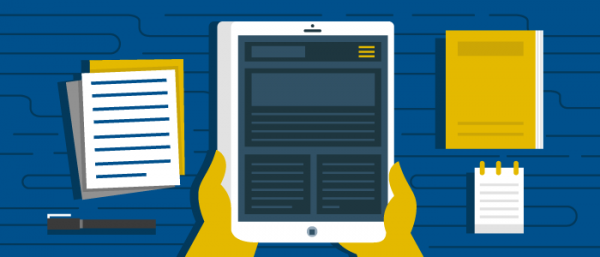
Plus, 9 digital magazine app definitions from the new digital age

Now that so many publishers are issuing digital app editions, it’s time to take a look around and quantify some best practices that we’ve noted in researching apps and digital magazines. For the past several years, we’ve been running a survey asking how people expect digital magazine apps to interact. I won’t divulge the whole survey yet, however I can tell you that pinching and zooming a PDF is definitely not desirable. The number one feature requested by users is the ability to scroll through text just like a website.
Not sure what kind of digital magazine app you have? First, let’s do some definitions. Terminology is changing constantly, as it always does with new technology and new products, but for now we should at least attempt to clarify a few things.
Some of these definitions come from outside Mequoda, but others are our own preferred definitions that serve to clarify some of the confusion in the industry right now. Your mileage may vary!
[text_ad]
- Digital magazine
 The Alliance for Audited Media (formerly ABC) defines a digital edition as distribution of a magazine’s content via electronic means. The digital edition must maintain the same identity of the host publication by maintaining the same brand characteristics. Mequoda agrees with this definition.
The Alliance for Audited Media (formerly ABC) defines a digital edition as distribution of a magazine’s content via electronic means. The digital edition must maintain the same identity of the host publication by maintaining the same brand characteristics. Mequoda agrees with this definition.
- Digital magazine app
For the publishing industry, Mequoda considers a magazine app – or just “app” – to be the program that allows users to access their digital editions on a mobile device. Readers download the app from a digital newsstand or app store. More about digital magazine apps.
More creative apps, such as those of New York and Forbes, offer free content of some kind that’s updated every day, in order to keep readers coming back for more. Others at least include a free issue or free sample content, in addition to selling subscriptions.
- Replica Magazine App
At Mequoda, we consider a replica edition to be a magazine app that’s fairly simple, with print content digitized on pages exactly as the print edition does it. The user swipes right to left in order to read left to right, and the pages are exactly as they appear in the print version, only downsized to fit on a tablet screen. More about replicas.
- Replica-Plus Magazine App
We can’t find anyone using this term on the internet the way we use it. For us, a replica-plus magazine is a simple replica, with the pages squeezed into the tablet screen, but with additional content, such as hyperlinks, videos, tappable photo galleries, and other technology not available to a print publication. It’s also sometimes called a non-replica or interactive edition. More about replica-plus.
[text_ad]
- Reflow Magazine App
A Mequoda Best Practice, reflowing your magazine so that the pages and type aren’t downsized and unreadable makes your magazine much more reader-friendly. In this version, the page is redesigned to fit the screen without shrinking the type. Additionally, it can be designed so that the page fits horizontally, but not vertically. The user swipes up to scroll through what is essentially one very long page.
- Reflow-plus Magazine App

This is the most advanced version of a digital magazine currently available. Now the publisher is adding the interactive bells and whistles to a nicely reflowed magazine. This gives you everything that readers are looking for in digital magazines. More about reflow plus.
- Web Magazine
A web magazine is not an app at all, but it is a linear, finite edition of a magazine, just like the app edition. Unlike the app edition, it’s accessed on the Internet through a web browser, meaning it’s accessible on any device and any platform, without restrictions. And unlike print magazines, it also delivers access to a library of all past articles, instantly available with just a click.
- Gadget app
At Mequoda we use this term to distinguish certain kinds of apps from the ones that most publishers are familiar with – the app that sells the magazine – and to avoid confusion. A gadget app doesn’t sell the magazine, but it provides some other function that’s related to the magazine’s content. For instance, Farm Progress has an app called “Growing Degree Days” for use on smartphones, which “measures the maturity of your crop by viewing current and past growing degree days data for your farm’s location.” Another example would be Martha Stewart’s “Martha’s Everyday Food: Fresh & Easy Recipes.”
- Tablet
When writers refer to tablets, they’re often talking about mobile computers such as iPads and all competitors such as the Kindle Fire, products from Microsoft and Samsung, and Google. Others only consider tablets to be the iPad and similar larger devices that have multiple functions, while the smaller Kindle and Nook devices are referred to as e-readers, being largely limited to reading functions.
[text_ad]
Best practices for digital magazines & apps
Now that we’re all clear on the above, let’s take a look at some of Mequoda’s favorite features in the magazine apps that we’ve noticed recently. Given how rapidly the industry is changing, some of these may eventually evolve into something else or disappear completely, but it’s still worth considering these features when you’re creating or rebuilding your own apps and magazines.
Digital magazine app best practice #1: Updated daily content in your app
Besides the fact that many users dislike free magazine apps that deliver nothing more than the opportunity to buy the magazine, an app with no there there gives users no reason to remember it, or the magazine, unless they want to buy a new single copy.
Magazines like New York deliver a full-scale daily news product inside their app – where the magazine is also easily accessible – that any user would love to check every day. Publishers have been delivering free content on their websites for years now, giving them daily opportunities to make new sales, so why not put some in your app?
Even if you don’t have a vast news staff like New York’s, you could post your daily blog or other content you’re already producing into your app, and include lots of ways for users to subscribe or buy single copies. It’s an opportunity for publishers to reach out to users who wouldn’t dream of sitting at their desk to read content on a website.
Digital magazine app best practice #2: Let ’em save their favorites
Print readers are accustomed to the ability to save something they really like by cutting it out. So they tend to miss that ability in digital editions, at least according to reviewers we’ve noticed in various magazine app stores and newsstands. So it’s a nice touch when you can add a feature such as Forbes’ clipping tool and The Atlantic’s folder feature. If you can get your readers to save and, better yet, share your content, you’ve opened up an entirely new marketing channel.
Digital magazine app best practice #3: Add value for advertisers
There are many ways you can make yourself a must-have for your advertisers, some of the more obvious being to allow links to the advertiser’s website directly from ads, or from products featured in articles. Black Belt magazine has one you don’t see everywhere, though: An interactive directory of ads, including a search function.
Imagine telling your potential advertisers that readers will always be able to return directly to an ad that they first noticed while reading your magazine … or look for a product they already knew they wanted and find it easily. What would that be worth to advertisers who think that digital advertising is only for game apps?
Digital magazines Best Practice #4: PDFs, not PNGs
It’s hard to believe in this advanced digital era, but some publications are still delivering blurry text and grainy images. That’s because they’re still exporting their magazine pages as PNG images, which look highly pixelated when viewed with the latest iPad’s display technology. Your magazine may take longer to load, but nothing will turn off your readers faster than a grainy-looking product, even when grainy Instagram photos are in vogue. Get with the 21st century, pronto.
Digital magazines Best Practice #5: Zoom zoom
This is yet another feature that seems like a no-brainer, but is not always available. Please let your readers increase the size of your wonderful content and images! Not everyone is 20 years old with perfect vision, and you certainly don’t want to risk readers never returning to your magazine because you went 20th century on them.
If you would like to learn more about building a magazine subscription website that features a robust web magazine and archive. And you want to learn how our clients have used this new business model to double and triple their profits in their first few years, please schedule a call with me.
Do you have any other digital magazine best practices to share? Disagree with my picks? Let’s hear them in the comments below!
This article was originally published in 2013 and is continually updated.




Great insights, thanks. Interesting to read that: “(…) however I can tell you that pinching and zooming a PDF is definitely not desirable”. When it comes to Replica+ (interactive magazines) providing pinching and zooming is crucial functionality to maintain great user experience. I explore this topic in likewise article on my blog http://blog.presspadapp.com/how-a-digital-magazine-can-overcome-the-obstacles-of-a-pdf/ Feel free to read and share your insights, too.
Thank you Stephanie. Very interesting. We haven’t encountered that before. We would refer to it as a Replica+ / Reflow hybrid. We’d need to research the implications (user experience, production time, page load speed, etc.) before making a recommendation one way or the other on this.
Curious: What might you call a magazine that can switch back and forth between “replica plus” and “reflow” (or “reflow plus”) with a single tap? That’s what our app does. On a smartphone, the default is reflow. On a tablet, the default is replica plus.
Great tips, thanks a lot! I also came across another great resource recently: http://blog.issuestand.com/post/59570581612/digital-publishing-best-practices-dont-make-your. I hope some readers will find this useful!
Thanks for the link! I know many of our clients use DPS.
Great information and tips here! At our recent DPS Summit in NYC (May 2013), leaders in digital publishing gathered to share their success stories using Digital Publishing Suite. If you’d like to learn more about best practices, check out the video clips here: http://adobe.ly/15Kvcpj